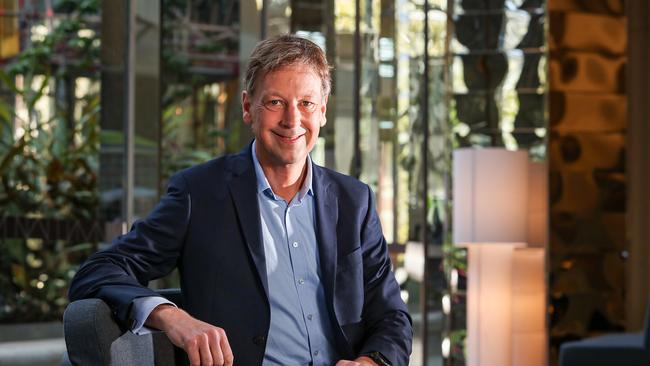Executive bonuses cut at Rio in the wake of damning report that found widespread bullying in its ranks.
The miner has also cut bonuses for executive team, including CEO Jakob Stausholm, by 5 per cent in response to its damning culture report.

Rio Tinto has cut billions of dollars more iron ore from its Pilbara mining plans to protect heritage sites around its new Gudai-Darri mine, as the resources giant’s board cut executive bonuses as a result of the company’s damning culture report.
Rio cut the deferred bonus flowing to former chief executive Jean Sebastien Jacques as a result of the report into the company’s internal culture, which found bullying, harassment and racism was endemic across Rio’s global operations.
The company said in its annual report, released on Thursday, it had cut short-term incentive payments to its current leadership team, including chief executive Jakob Stausholm, by 5 per cent for the year in response to the damning culture report.
Its board has said Rio intends to reduce deferred share issues to Mr Jacques – who led the company through the bulk of the period examined by the culture review – reducing the number of Rio Tinto’s London listed shares due to vest to Mr Jacques at the end of 2022 by 2623 – worth about £147,465 ($276,000).
Mr Jacques left Rio in late 2020, in the wake of the Juukan Gorge scandal, and it is understood that other key Rio executives that departed at the same time – including former iron ore boss Chris Salisbury and corporate affairs chief Simone Niven – will also be stripped of an equivalent number of long term incentive shares.
And while Rio’s internal culture is now more of a focus for Mr Stausholm than the immediate crisis brought on by the destruction of ancient heritage sites at Juukan Gorge, the fallout from the debacle is still affecting the company.
A 2019 review of heritage sites surrounding Rio’s Pilbara operations in the wake of the Juukan Gorge destruction had already slashed 54 million tonnes from its iron ore inventory.
Rio said in its annual report further heritage work had led to the cut of another 46 million tonnes of iron ore from its reserves, primarily around its new Gudai-Darri mine. That iron ore would be worth roughly $US6.2bn delivered to China at current prices.
Gudai-Darri is a key project needed to sustain the quality of Rio Tinto’s core iron blend into the future.
Delays to a decision to build the mine have been a key factor behind steadily rising costs at Rio’s Pilbara operations. It has also forced Rio to ship a steadily growing amount of a lower-grade product known as SP-10 over the last few years, which has meant that – despite the fact the company has still generated record profits – Rio has not been able to get the full benefit of record iron ore prices.
Rio’s Pilbara operations had average production costs of $US13.40 a tonne in 2017. It expects 2022 costs to average $US19.50 to $US21 a tonne – up to 57 per cent greater.
First output is expected from Gudai-Darri by June, and chief financial officer Peter Cunningham told analysts on Wednesday night the mine would add critical production flexibility into Rio’s Pilbara operations that would help drive down costs in the medium term.
But the company still faces the consequences of decisions to hold back spending in its Pilbara operations as the iron ore price fell in the middle of the last decade, with Mr Cunningham saying part of the reason behind higher costs in 2022 was an accelerated campaign of maintenance across its production hubs.
Mr Cunningham told analysts rising input costs – such as soaring fuel prices – were a significant part of the forecast lift in Rio’s iron ore production costs.
“The second is around making the necessary investment in asset reliability, with increased maintenance on our processing plants,” he said.
“We are also targeting further investment in our heritage and environment teams and continuing to invest at an increased level in studies for the next set of mines. These are conscious decisions which will strengthen us for the future.”
Rio shares closed down $4.52, or 3.8 per cent, to $115.35 on Thursday – against the broader sharemarket’s 3 per cent fall.

